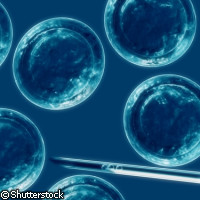Turning adult cells into embryonic stem cells just got easier
Scientists have developed a simpler way of converting adult stem cells into cells which behave like embryonic stem cells. Furthermore, the resulting cells are less likely to cause complications such as cancer than cells converted using current techniques. The finding raises the hope that converted adult stem cells could one day be used to treat patients which genetic diseases. Embryonic stem cells are pluripotent; this means that they have the potential to turn into any kind of cell in the body. In contrast, adult stem cells can only turn into a limited number of cell types. For example, blood stem cells can turn into different types of blood cell, and neural stem cells can turn into different types of nerve cell. Some two years ago, a team of Japanese researchers succeeded in turning ordinary adult cells into cells which, like embryonic stem cells, were truly pluripotent. They called these new cells 'induced pluripotent stem cells' (iPS cells). The iPS cells were created by injecting adult cells with viruses containing four genes (Oct4, Sox2, c-Myc and Klf4). These genes reprogrammed the cells, effectively returning them to an earlier stage of development. However, there was a flaw in this method; many of the animals which received these iPS cells developed cancer just a few weeks later. This was found to be largely due to the gene c-Myc. This latest piece of research results from the discovery that neural stem cells in the brains of mice naturally produced high levels of two of the products of the genes (Sox2 and c-Myc). The scientists set out to investigate the possibility of creating iPS cells with fewer genes. Their results are published online by the journal Nature. They found that neural stem cells could be turned into iPS cells with just two genes: either Oct4 in combination with Klf4, or Oct4 together with c-Myc. According to the researchers, the fact that iPS cells can be generated with just two genes shows that they are on the right path. Ultimately, they hope to be able to avoid using genes entirely, as there is always the risk that they will activate cancer genes for example. 'Only in this way can we succeed in developing treatments for as yet untreatable diseases by using stem cell therapies which are not only effective but safe enough to be used in people,' commented Professor Hans Schöler of the Max Planck Institute for Molecular Biomedicine in Germany. It is unlikely that future therapies will be based on the use of neural stem cells, as these are found mostly in the brain and are therefore rather difficult to extract. However, the knowledge gained from this research will help scientists identify other cells which could be treated in the same way. Meanwhile, Professor Schöler's team is busy looking for small molecules which could replace the genes. At the beginning of June, his team published research revealing that the Oct4 gene could be replaced by a molecule which temporarily activates pluripotency-associated genes. 'Oct4 plays a key role in reprogramming [iPS cells],' explained Professor Schöler. 'If we can replace this gene, it should also be possible with the remaining three in the foreseeable future.'
Countries
Germany



